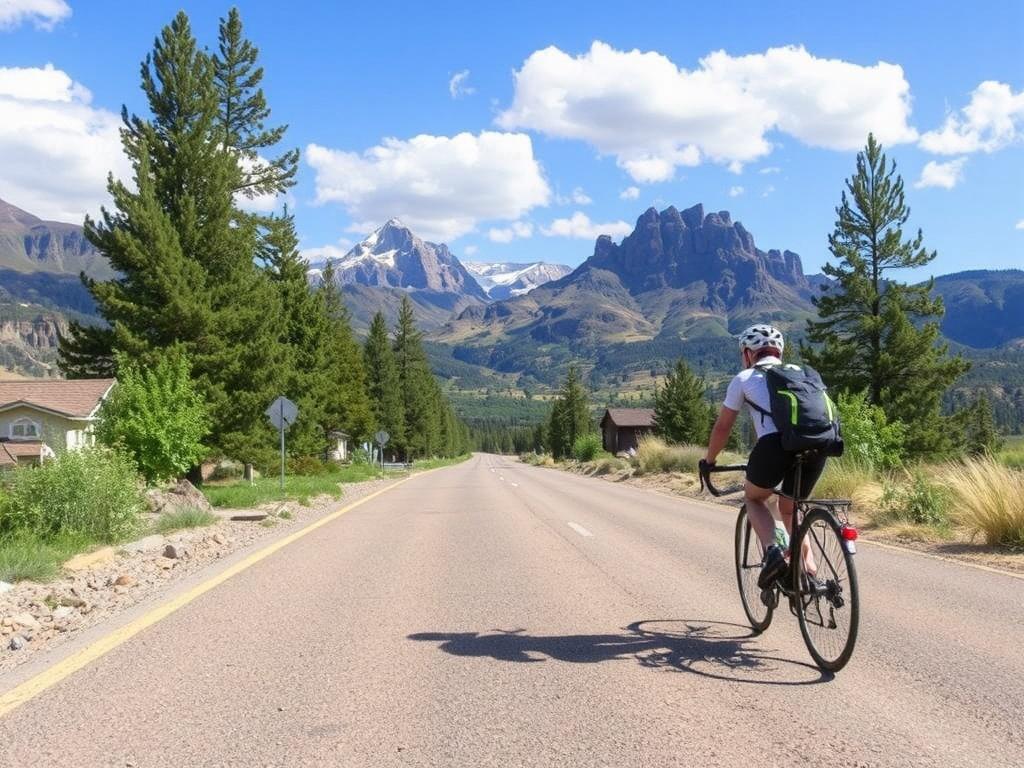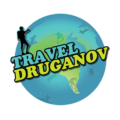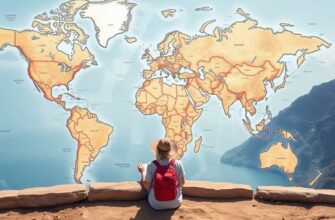Embarking on a journey to cycle the world is a dream shared by countless adventure seekers and cycling enthusiasts. The thought of pedaling through diverse landscapes, cultures, and climates, fueled only by your determination and a well-packed bike, is exhilarating. But cycling the world is no small feat—it requires meticulous preparation, an understanding of potential routes, and the right mindset to thrive on the open road. Whether you are a seasoned cyclist or a beginner eager to embark on your first long-distance journey, this article will guide you through everything you need to know to make your cycling adventure unforgettable.
Cycling the world combines physical endurance, mental strength, and careful planning. From choosing the right gear and training your body to deciding which routes will offer the safest and most enriching experiences, every aspect matters. Along the way, you’ll encounter challenges that test your resilience but also moments of stunning beauty and inspiring encounters with people from all walks of life. Let’s dive into the essential steps and recommended routes that will set you on the path to cycling the world successfully.
Getting Ready to Cycle the World: Essential Preparations

Choosing and Preparing Your Bike
Selecting the right bike is the cornerstone of any long-distance cycling journey. For cycling the world, most adventurers opt for a touring bike or an adventure bike designed to handle various terrains. These bikes are built sturdily, with more comfortable geometry for long rides and the ability to carry heavy loads on racks and panniers.
Before you set off, ensure your bike is thoroughly checked and customized for your specific needs. Consider these tips:
- Frame material: Steel frames are strong and easier to repair in most parts of the world, making them a popular choice.
- Gearing: Opt for a wide gear range to tackle mountains, flats, and all kinds of terrain.
- Brakes: Disc brakes are preferred for their reliability, especially in wet or mountainous conditions.
- Accessories: You will need racks, panniers for cargo, comfortable saddles, and possibly handlebar bags for easy access.
Once you select your bike, spend time adjusting it, testing luggage setups, and taking shorter test rides with full gear to ensure comfort.
Physical Training and Building Stamina
Endurance cycling demands a solid fitness foundation. Even if you are a casual cyclist, months of physical training beforehand will make your journey smoother and more enjoyable. Focus on:
- Cardiovascular fitness: Build your aerobic capacity through regular rides of increasing distance.
- Strength training: Core and leg strength help prevent injury and maintain power on long climbs.
- Flexibility and recovery: Dedicate time to stretching and rest days to keep your body balanced.
- Simulating loaded rides: Practice riding with your full gear weight to get used to handling and energy demands.
Remember, cycling the world is a marathon, not a sprint. Gradual progress is key.
Planning Your Gear and Supplies
Packing for a world cycling journey requires careful thought. You need enough to be self-sufficient, but too much weight will slow you down and increase fatigue. Here’s a broad list to help guide your preparations:
| Category | Essential Items | Optional Items |
|---|---|---|
| Bike & Tools | Multi-tool, spare tubes, pump, patch kit, chain lube | Spare spokes, heavy-duty tools |
| Camping Gear | Light tent, sleeping bag, mat | Camping stove, extra food supplies |
| Clothing | Breathable jerseys, padded shorts, rain jacket | Extra warm layers, gloves, hats |
| Navigation & Tech | GPS device or smartphone, maps, charging bank | Solar charger, travel adapter |
| Personal Items | First aid kit, toiletries, identification documents | Books, camera |
Packing light but smart is vital. Weight affects cycling efficiency, and carrying unnecessary items may sap your energy and enthusiasm.
Securing Visas and Understanding Travel Requirements
Cycling the world means crossing many borders, each with its own rules for passports, visas, and entry requirements. Research each country on your planned route carefully, and allow plenty of time to obtain the necessary documentation.
Key points to consider:
- Visa validity: Some visas are valid for only a short duration, so plan timing accordingly.
- Restrictions: Be aware of areas with restricted access or ongoing conflicts.
- Health requirements: Certain countries require vaccinations or health certificates.
- Currency and communication: Learn about exchange rates and SIM card options in advance.
Staying organized with paperwork will reduce delays and complications on the road.
Bikepacking Routes for Cycling the World

Popular Transcontinental Routes
When it comes to cycling the world, certain iconic routes have emerged as favorites among adventurers. These routes cover a variety of continents and showcase diverse cultures, climates, and landscapes. Here are some of the most popular transcontinental routes:
- North America: The Pacific Coast Route — Stretching from Canada’s British Columbia to Mexico’s Baja California, this route offers stunning coastal views and a mild climate, perfect for first-time long-haul cyclists.
- Europe: EuroVelo 6 — From the Atlantic coast in France all the way to the Black Sea in Romania, this route follows almost entirely along rivers, offering gentle terrain and rich historical sites.
- Asia: The Silk Road Cycle Route — Traversing Central Asia, this route combines adventure with history as you pedal through the ancient landscapes of Uzbekistan, Kyrgyzstan, and Kazakhstan.
- Africa: Cape to Cairo — A legendary, though challenging, route moving from the southern tip of South Africa up through diverse countries to Egypt in the north.
Each route presents different logistical challenges, from climate extremes to political stability. Pick those that align with your cycling experience and comfort level.
Remote and Off-the-Beaten-Path Routes
For those seeking more solitude and adventure away from crowded trails, off-the-beaten-path routes offer pristine landscapes and unique cultural encounters:
- Patagonia Circuit: Explore the windswept plains and dramatic mountains of southern Chile and Argentina.
- The Pamir Highway: Known as the “Roof of the World,” this route in Tajikistan features high altitude passes and breathtaking views.
- Trans-Mongolian Cycle: An epic journey over Mongolia’s vast steppes and deserts, blending adventure with nomadic culture.
- Indonesia Island Hopping: Cycle across volcanic islands and tropical jungles, a true island adventure with bustling towns and serene beaches.
These routes often require more self-sufficiency and preparation but reward the cyclist with extraordinary experiences.
Planning Daily Distances and Rest Days
One of the most crucial aspects often overlooked is pacing yourself during cycling the world. Overestimating what you can do in a day can lead to fatigue, injury, or loss of motivation. Conversely, underestimating distances can slow your momentum.
Here’s a flexible guideline for daily distances:
| Type of Terrain | Beginner Daily Distance | Experienced Rider Daily Distance |
|---|---|---|
| Flat paved roads | 50-70 km (31-44 miles) | 80-120 km (50-75 miles) |
| Mixed terrain (gravel, hills) | 30-50 km (19-31 miles) | 50-80 km (31-50 miles) |
| Mountainous or high-altitude | 20-30 km (12-19 miles) | 30-60 km (19-37 miles) |
Incorporate rest days every 5-7 days to recover physically and mentally. Use rest days to explore local culture, repair your bike if needed, or simply relax.
Safety and Health Considerations on the Road

Staying Safe While Cycling the World
Safety is paramount when cycling the world. Although cycling offers a sense of freedom, you must stay vigilant against risks such as traffic accidents, theft, and weather extremes. Some key tips include:
- Wear a helmet: It’s a simple but effective way to reduce head injuries.
- Visibility: Use reflective gear and lights, especially when riding near traffic or after dark.
- Know local traffic laws: Rules vary, and understanding them reduces dangerous encounters.
- Secure your bike: Always lock your bike with a good-quality lock during stops.
- Stay aware of your surroundings: Use common sense and trust your instincts.
Additionally, share your itinerary with someone back home and keep emergency contact numbers handy.
Health Tips for Long-Distance Cycling
Maintaining your health is crucial during a long journey. Here are some health tips tailored for cycling the world:
- Hydration: Drink water regularly to avoid dehydration, especially in hot climates.
- Nutrition: Opt for balanced meals rich in carbohydrates, proteins, and fats to fuel endurance.
- Skin care: Protect yourself from sunburn with sunscreen and appropriate clothing.
- First aid knowledge: Learn basic first aid and carry a kit for minor injuries.
- Mental health: Long journeys can be lonely; find ways to stay connected and motivated.
Taking care of your body and mind will help you enjoy the journey and reach your destination stronger.
Engaging with Local Cultures and Making the Most of Your Journey
One of the greatest rewards of cycling the world is the opportunity to experience local cultures intimately. Unlike other forms of travel, cycling offers a slower pace that allows you to meet locals, understand customs, and find hidden gems. To fully embrace cultural engagement:
- Learn basic phrases in local languages – even simple greetings open doors.
- Respect local customs and traditions; research these before entering new regions.
- Try local cuisines and support small businesses and markets.
- Stay in homestays or campsites where locals gather to immerse yourself more deeply.
- Share your story and listen to others—it enriches your journey beyond miles traveled.
Cycling the world is about more than just distance—it’s about connection.
Conclusion
Cycling the world is an adventure like no other, offering a blend of physical challenge, cultural exploration, and personal growth. With careful preparation, from choosing the right bike and building endurance to planning routes and ensuring safety, you can turn this ambitious dream into a fulfilling reality. Whether pedaling along iconic routes like the EuroVelo 6 or conquering remote paths like the Pamir Highway, each day on the saddle will bring new experiences and lessons. Embrace the journey with an open heart, pace yourself wisely, and immerse yourself in the rich tapestry of people and places that cycling the world unveils. The road is long, but with passion and perseverance, it leads to unforgettable discoveries.









